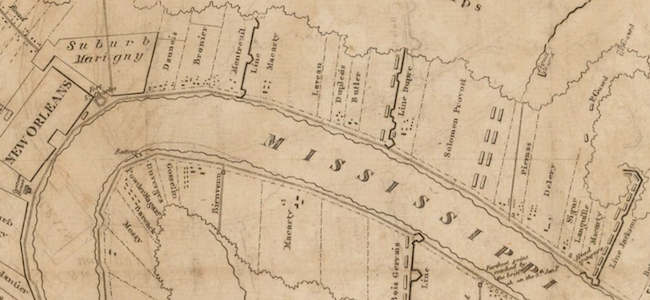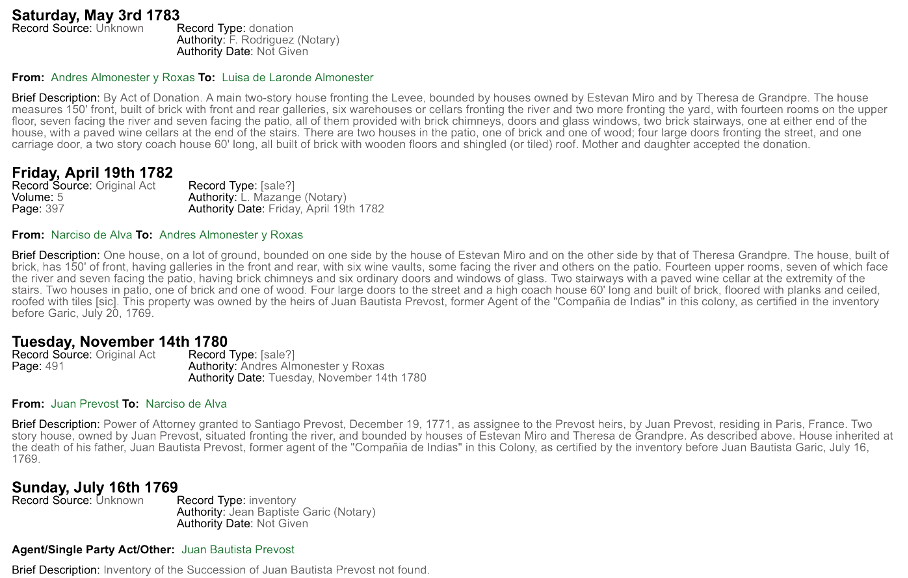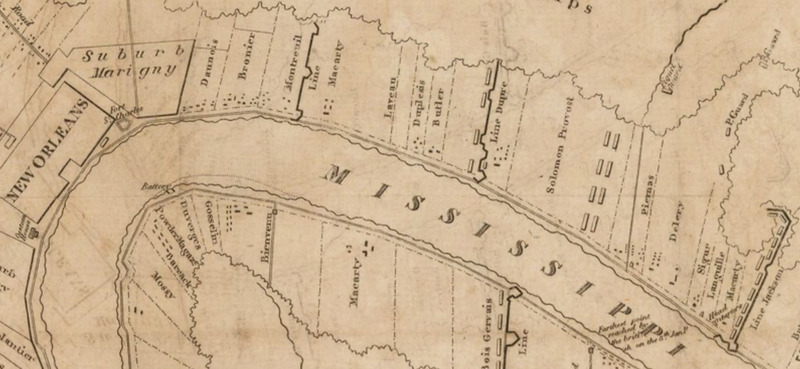Naneta Frees Her Brother After a Hurricane Story Info
- Title:
- Naneta Frees Her Brother After a Hurricane
- Date:
- 1793-03-12
- Story:
-
Various manumission precedents set by 18th-century Spanish law, such as coartación, developed an unstable network of legal identities around free and enslaved peoples in colonial Louisiana.1 These liminal legal spaces were continuously interrogated, developed, and employed by individuals and extended kinship networks in actions designed to secure the freedom of themselves and of others. This was especially true for Naneta St. Marc, negra libre, from Attakapas Post, the sister of Juan Pedro dit Bonhomme. In this 1793 case, we see Naneta calling for the emancipation of her brother. Naneta comes to court having procured both a lawyer to represent her case and an appraiser to estimate the cost of securing his freedom from Don Salomon Prevot. She builds her legal case around the fact that Juan Pedro sustained injuries while on Prevot’s property when a choza, or small shack, fell on him during a hurricane.2 However, Prevot’s legal challenge to this suit includes his named appraiser, Don Juan Bautista Mercier, valuating Juan Pedro at the amount of 700 pesos, which is double the amount that Naneta’s appraiser verified before the court. In response, Naneta returns to the cabildo and begs the judge to appoint a third appraiser in dissension, Don Antonio Ramis, to complete the coartación proceedings. This third estimate matches the sum already presented on behalf of Naneta, 350 pesos, and the judge, therefore, orders a Deed of Freedom be issued as soon as Naneta pays this price.
This exchange provides a snapshot of the complex legal architecture on which freedom suits rest in colonial Louisiana. In the tenuous legal overlap between French and Spanish colonial regimes, precedent was consistently tested and established through the legal actions of free and enslaved Black and Indigenous individuals. In the context of Spanish colonial Louisiana, where a shortage of labor and resources meant that enslaved people were “sold at the price of gold,” an enslavers’ ability to make a financial return on their “investments” required that an enslaved individual’s physical and mental abilities became a site for contestation. As a potential financial liability, disability, or the perception of it, led to a legal system wherein individual and systemic investments into the institution of slavery were valued more strongly than the lives and even the freedom prices of enslaved persons.3 Here, we see Naneta deftly navigate this complex set of legal impediments to argue that her brother, Juan Pedro, should be given a fair valuation in his coartación proceedings due to his enslaver’s immovable property, the choza, having done excessive harm to Juan Pedro’s person, thus rendering a lack of physical capacities which decreased his calidad.4 Building from this, Naneta’s case articulates a challenge to Don Salomon Prevot’s attempt at denying Juan Pedro justice.
Naneta uses Juan Pedro’s hurricane-induced injury as grounds for legal action and successfully takes advantage of the loopholes within Spanish colonial property law that had been designed, instead, to protect the financial liabilities and interests of enslavers. Naneta successfully argues that it is both fair and just that her brother be set free at a more reasonable price. Her case offers a vivid example of the vast set of strategies employed by enslaved people and their kin in pursuing freedom, prompting compelling questions about the overlaps between disability justice, climate justice, property law, environmental protection, and the right to liberty in Louisiana across time.
Further Resources

Fig. 1. This map from the Battle of New Orleans shows the property of Salomon (Santiago) Prevot (Prevost), enslaver of Juan Pedro alias Bonhomme. Though Naneta was a resident of the Attakapas District, Prevot owned properties in the Vieux Carré (on the 500 block of Decatur, later owned by the Baron Pontalba) and plantations (indigo and dairy) in the present-day areas of Holy Cross and Chalmette. In the Lower 9, his neighbors included none other than Roberto Montreuil, enslaver of Roseta and her son Domingo alias Lubin, as well as the infamous Macarty family, amongst others. Source: Arsene Lacarierre Latour, Map Shewing [sic] The Landing of the British Army its several Encampments and Fortifications on the Mississippi (Philadelphia, 1815).
Fig. 2. Records of the Prevot family’s Decatur St. property as recorded by the Collins C. Diboll Vieux Carré Digital Survey.Notes
-
See Steven Mintz, “Historical Context: American Slavery in Comparative Perspective,” Gilder Lehrman Institute of American History, accessed August 2, 2024, https://www.gilderlehrman.org/history-resources/teacher-resources/historical-context-american-slavery-comparative-perspective. ↩
-
In 1793, there was an unnamed storm or hurricane that affected Louisiana - and New Orleans - specifically. The weather event is referenced in several documents housed at the Archivo General de Indias, in Seville, Spain. See Ricard García-Herrera, Luis Gimeno, Pedro Ribera, and Emiliano Hernández, “New Records of Atlantic hurricanes from Spanish documentary sources” in Journal of Geophysical Research, vol. 110, no. 3 (February 2025)” ↩
-
For more see Erwan Yevan Terrien, Exiles and Fugitives: Labor, Mobility and Power in French Colonial Louisiana, 1699-1769. PhD Dissertation, University of Pittsburgh (2020). ↩
-
“Calidad” implied the overall presumed quality of the person in question based upon factors such as class, lineage, and religion. For more on how enslaved people made assessments of their own worth beyond the racist capitalist logics of economic evaluation that followed them from birth to death, see Daina Ramey Berry, The Price for Their Pound of Flesh: The Value of the Enslaved, from Womb to Grave, in the Building of a Nation (Boston: Beacon Press, 2017). ↩
-
- Keywords:
- coartación disability emancipation freedom freedom suit free papers kinship wellness
- Latitude:
- 29.957
- Longitude:
- -90.063
- Documents:
- d0111

